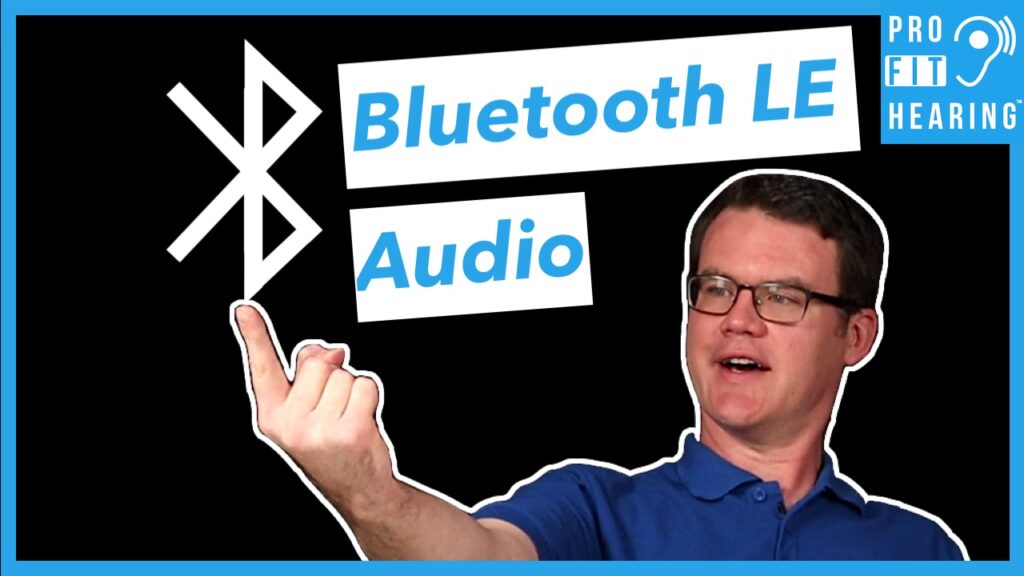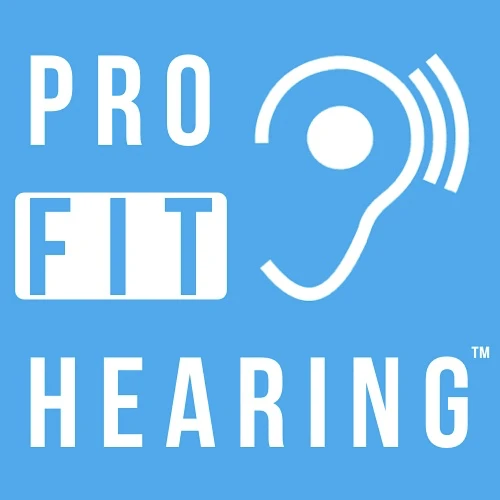Bluetooth Low Energy Audio – Bluetooth Hearing Aids, Headphones, & Earbuds

Bluetooth Low Energy Audio – Hearing Aids, Headphones, & Earbuds
What is Bluetooth Low Energy Audio, and what exciting new features does it bring to Bluetooth hearing aids, headphones, and earbuds? I’ll let you know in this post. Coming up!
SUBSCRIBE to our YouTube channel for weekly videos!
Hi, I’m Dr. Derek – audiologist, audio engineer, and musician with Pro Fit Hearing.com bringing you the best insight in today’s latest hearing aids, headphones, and audio technology to improve your life. If you have concerns about your hearing, always consult with your local physician or audiologist.
If you’re interested in hearing aids, check out my free eBook HERE.
Bluetooth Low Energy Audio
Today, I’m talking about Bluetooth Low Energy Audio released with Bluetooth 5.2 for compatible Bluetooth hearing aids, headphones, and earbuds. Within the Bluetooth audio specification, we have Bluetooth Classic audio and now Bluetooth Low Energy audio (or LE audio).
Codec
Bluetooth audio uses a codec (or coder-decoder) to encode and decode a digital audio signal. The coded audio signal is transferred wirelessly from a playback device like a smartphone to a pair of Bluetooth hearing aids, headphones, earbuds, or speakers.
Bluetooth Classic audio uses the SBC codec (or Sub-Band Codec), and Bluetooth Low Energy audio uses the LC3 codec (or Low Complexity Communications Codec). This new LC3 codec is an improvement over the previous version because it allows for better audio quality at a lower bit rate, lower power consumption, and it also allows for a smaller device and battery.
Stream
Bluetooth Classic audio is single stream. This means you can connect one pair of headphones, earbuds, or hearing aids to one playback device at a time. This has worked well, however with the introduction of truly wireless earbuds single stream transmission can cause increased latency and audio drop outs. This is because the stereo audio stream is first sent to one earbud and then sent over to the second earbud.
Bluetooth LE audio is multi-stream. This means you can connect one pair of headphones, earbuds, or hearing aids to several playback devices at a time. You can hear all the audio streams without switching between playback devices. For truly wireless earbuds, the audio stream is sent to both earbuds independently at the same time. The audio is synchronized between ears which provides a more consistent stereo image and connection. Multi-stream also allows for better voice control and voice assistant support.
Broadcast Audio
New to Bluetooth LE audio is broadcast audio. You can broadcast one or more audio streams to an unlimited number of devices like headphones, earbuds, and hearing aids. You can have an open broadcast so that anyone can listen with their Bluetooth device. Think of it like a public WIFI network that anyone can log onto. This could be used at airports, gyms, movies, or any public place and provide alternative audio tracks for different languages.
Bluetooth Hearing Aids
For Bluetooth hearing aid users, Bluetooth LE audio is especially important. Bluetooth LE audio’s low power consumption is great for small hearing aid batteries which allows you to stream audio for longer. Also, the multi-stream feature enables audio streaming from a microphone or audio device to all compatible hearing aids in a room. This can be very useful for hearing impaired students in a classroom or for anyone that’s using hearing aids in a public place that has broadcast audio available.
Android & iPhone
Also, an additional benefit of Bluetooth Low Energy audio is direct audio streaming from Android devices to hearing aids. iPhone compatible hearing aids have been around for years, but unfortunately Android users have been required to use an extra accessory to stream audio. Now there’s several hearing aids that use Bluetooth LE audio. Check out the notes in the description for more details.
Bluetooth Low Energy Audio – Question of the Day
Which Bluetooth Low Energy audio feature are you most excited about? Let me know in the comments below. If you received value from this post, go to https://www.youtube.com/profithearing and check out all the videos on our YouTube channel.
-Dr. Derek
